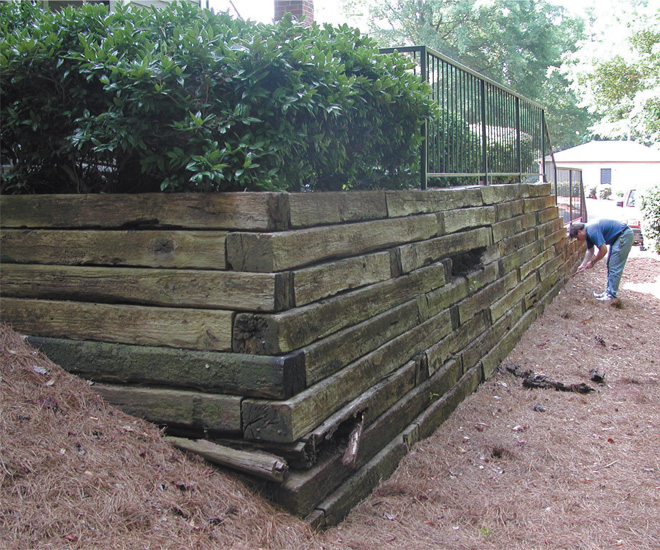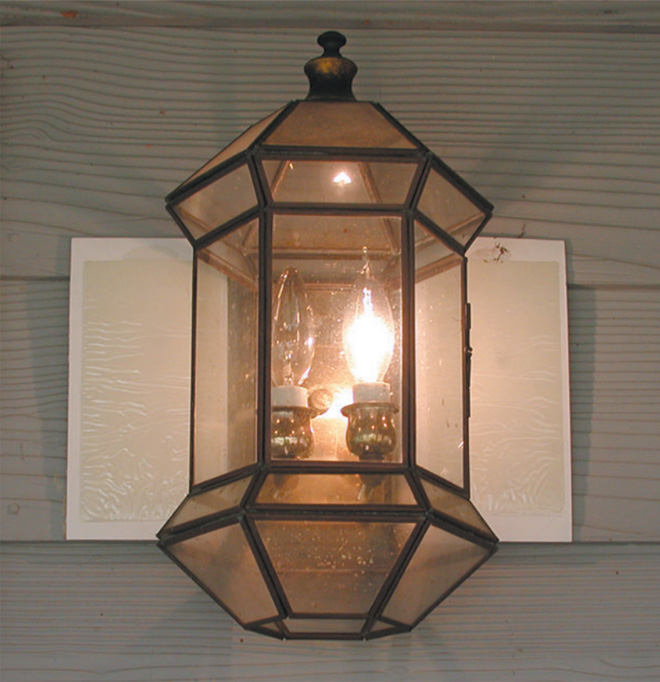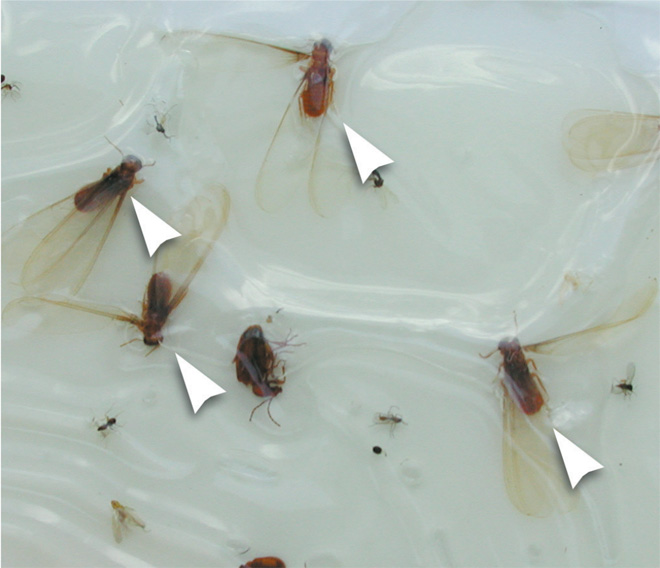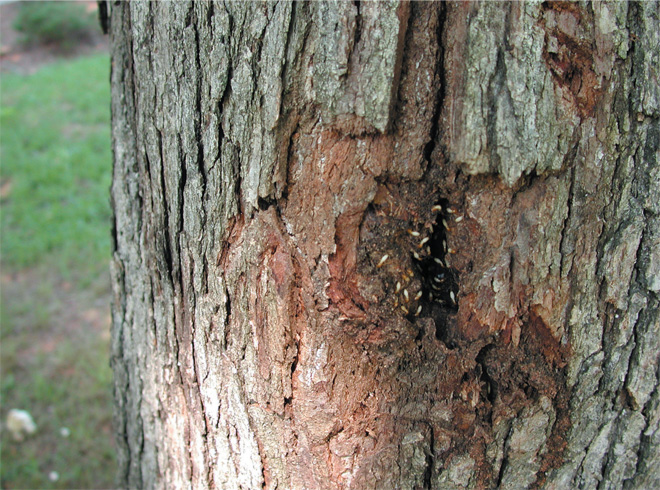Since the early 1990s, Formosan subterranean termite (Coptotermes formosanus Shiraki) infestations have been found at a number of sites in Georgia. For more information on the Formosan termite’s status in Georgia, go to www.gabugs.uga.edu.
Formosan termites are not native to the United States. They are commonly spread by movement of infested railroad crossties used in the construction of retaining walls and other landscape features (Figure 1). Still, the Formosan termite is rare in Georgia and railroad crossties in the landscape in no way implies its presence.

Figure 1. Formosan termites are most commonly spread when infested railroad crossties are used to build retaining walls and other structures. The presence of crossties on one’s property, however, is not absolutely indicative of Formosan termite presence.

Figure 2. Formosan subterranean termite swarmers (in the top part of the image) are one-half of an inch long while native subterranean termite swarmers (in the bottom part) are three-eighths of an inch long. Formosan subterranean termite swarmers are caramel to brownish-yellow colored, while native subterranean termite swarmers are black.
Learn to Recognize the Formosan Subterranean Termite
It is important that termite control professionals, including first responders (e.g., receptionists), be able to differentiate between the Formosan subterranean termite and Georgia’s more common native subterranean termites (e.g., Reticulitermes species). In short, Formosan termites can be differentiated from Georgia’s native subterranean termites by the following three criteria:
- Differences in swarmers. Formosan termite swarmers are larger than native subterranean termite swarmers, measuring one-half of an inch from tip of head to tip of wings, and the body is caramel- to brownish-yellow in color (native termite swarmers are black and three-eighths of an inch long from tip of head to tip of wings; Figure 2).
- Difference in swarm time and season. Formosan termites (1) swarm at night; (2) swarm in late May and/or early June (in Georgia), and (3) swarmers are attracted to light (Figure 3). Native subterranean termites begin swarming in February/March, swarm during the day, and are not attracted to lights. To find evidence of a previous Formosan termite swarm, look for dead, dried swarmers or their wings in window sills, in spider webs (indoors and outdoors), and inside porch light covers. Employees who answer the phone in response to swarmer calls should be made aware that Formosan termites swarm at night during May and June. In the rare case that a caller indicates a “night swarm” receptionists are encouraged to pass this information on to an owner and/or manager
- Differences in soldiers. Formosan termite soldiers make up as much as 15–20% of the termites in a colony, compared with just 1–3% in a native subterranean termite colony. Generally, if a colony is breached and a large number of soldiers are immediately evident, the termites may be Formosan (Figure 4). Formosan termite soldiers also exude a white, glue-like secretion from the top of their head when harassed; native subterranean termite soldiers do not exude this material (Figure 5). If challenged, Formosan termite soldiers may also try to bite. However, their bite is not painful or dangerous in any way.


Figure 3.Formosan termite swarmers are attracted to lights.Their presence can be detected by placing sticky cards next to porch lights during the time Formosan termites are most likely to swarm—late May and early June in Georgia. Inset: Formosan termite swarmers (arrows) trapped on a sticky card.
Please Report Formosan Termite Discoveries
If your company discovers what they believe to be Formosan termites, we would like to know. For verification collect several swarmers and/or soldiers (do not send workers) and place them in a small, airtight vial filled with rubbing alcohol, and send the vial to: Dr. Daniel R. Suiter, Department of Entomology, UGA’s Griffin Campus, College of Agricultural and Environmental Sciences, 1109 Experiment Street, Griffin, GA 30223-1797. Be sure to include a phone number and/or email address.

Figure 4. Finding a large number of soldier termites immediately after a shelter tube or piece of infested wood is breached is indicative of Formosan termites.This picture,taken just 2 min after a shelter tube was broken,shows nearly 40 soldier termites and only two worker termites

Figure 5. When harassed, Formosan termite soldiers often exude a white, glue-like substance from a gland on the top of their head (arrows). The glue-like material is used naturally in defense against intruders, especially ants.
Status and Revision History
Published on Apr 05, 2005
Published on Mar 13, 2009
Published with Full Review on Mar 30, 2012
Published with Full Review on Mar 28, 2017
Published with Full Review on Jul 21, 2022


























































